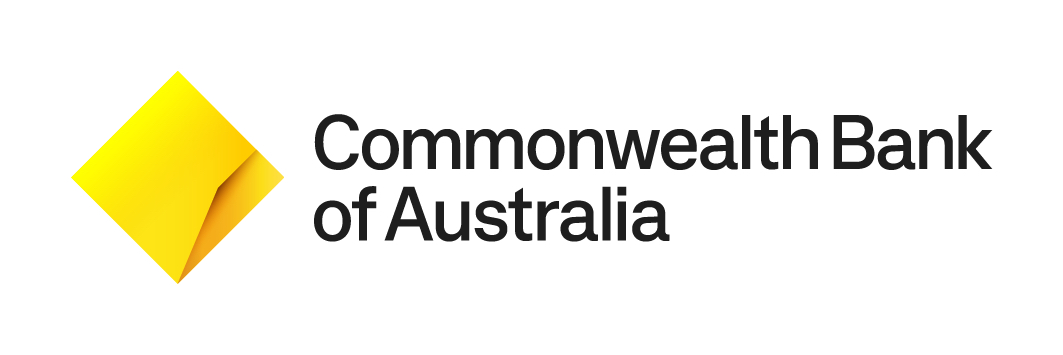
The sustainable-finance nexus
Commonwealth Bank of Australia is turbocharging the sustainable-finance operation within its institutional business, including some key new hires and more to come. The team is focused on working with clients to gain deep understanding of their ESG risks and, from there, assisting with transition. The bank’s ambition is high.
The Commonwealth Bank of Australia (CBA) institutional business and environmental, social and governance (ESG) factors are no strangers. The bank has incorporated ESG risk into its institutional lending for some years, and more recently has been involved in the evolution of sustainable-debt products in Australia including arranging a number of benchmark transactions.
The bank now has a dedicated sustainable-finance and ESG team led by Charles Davis, Sydney-based managing director. This specialist team was established in response to “the significant and increasing focus on sustainability and ESG across our whole stakeholder base”, Davis says. The team will work with front-line bankers across the CBA institutional banking and markets business to leverage knowledge that already exists throughout the organisation.
Davis says CBA has strongly focused on building its team, adding to longstanding members new hires from outside the bank that have “a slightly different perspective from the traditional banker”. Among the former is Sydney-based executive director, Louise Hatton, who has been heavily involved in the ESG sector for a number of years.
New hires to date bring knowledge and experience developed in the corporate and asset-management sectors. Bláthnaid Byrne has joined CBA as director, sustainable finance and ESG having spearheaded AGL Energy’s sustainable-finance efforts in her previous roles in the gentailer’s group treasury and decentralised-energy functions. She has also been involved in the NGO sector, lending her expertise to large organisations focused on environmental and social outcomes.
Meanwhile, another new hire – Camille Wynter, associate director, sustainable finance and ESG – previously worked for AMP Capital in the Sustainable Investment Team where she was responsible for company board engagement and proxy voting across Australian equities.
“With Bláthnaid and Camille, we have added incredibly exciting and broad skill sets covering the corporate market – including a borrower’s understanding of the product set – and the investor piece,” Davis says. “We didn’t go to market specifically targeting those two skill sets, though. The key was getting the right people with knowledge of this market, and we are incredibly lucky to have found individuals with fantastic backgrounds that cover as broad a range as we could possibly hope for.”
The build-out of the sustainable-finance and ESG team is not yet complete, and Davis says the goal is to continue to invest. “It is a significant investment for the bank but one that is wholly justified given the importance of the area for us and our clients, and of the role financial institutions can play in this area.”
“I want to try to help clients understand the optimal way to execute bespoke and nuanced transactions. Each client is on its own trajectory and at a different point in its journey, but we want to help them all have an end goal in place as well as to offer advice on steps they need to take to get there.”
CLIENT ALIGNMENT
CBA is seeking to align its sustainable-finance operation with the evolving nature of client needs in a market that has moved beyond banks pitching a relatively narrow range of ESG products, primarily focused on green bonds.
Instead, Davis says, the market is moving quickly and the conversation is increasing in sophistication. Banks, whether acting as lenders or advisers, need to offer a deep level of understanding both of the ESG universe in general and of individual clients’ interaction with it. The need is only growing as the transition-investment opportunity expands and, at the same time, sustainable-finance practices are more widely used beyond the environmental space (see box).
Gearing up for a bigger investment opportunity
There is growing excitement in Australia about the potential for environmental transition – especially in the electricity generation and distribution space – to provide a massive new investment opportunity. Social outcomes are a step further away from the market mainstream but sustainable finance could unlock more of them, too.
The environmental component of environmental, social and governance (ESG) finance has traditionally been the most readily addressed and also the most aligned with capital-markets funding. The nexus of climate and finance will only become more important in Australia as the scale of financing required to manage the forthcoming transition to a low-carbon economy becomes clear.
“We have been very focused internally on the potential opportunity set,” reveals Charles Davis, managing director, sustainable finance and ESG at Commonwealth Bank of Australia (CBA). “This is one reason we are so excited about sustainable finance in general – because we see it as a real opportunity moving forward, particularly in electrification.”
We have been very focused internally on the potential opportunity set. This is one reason we are so excited about sustainable finance in general – because we see it as a real opportunity moving forward, particularly in electrification.
Davis tells KangaNews: “We seek to understand deeply what our clients are looking to achieve in this area and this quickly rolls into discussions about transition. Products and services are at the end of this discussion rather than being a leading origination tool.”
The CBA team will help this process of hooking client progress to the right parts of the sustainable-finance matrix. “I want to try to help clients understand the optimal way to execute bespoke and nuanced transactions,” Byrne comments. “Each client is on its own trajectory and at a different point in its journey, but we want to help them all have an end goal in place as well as to offer advice on steps they need to take to get there.”
As a general rule, corporate Australia has made significant strides on ESG engagement in relatively short order. Byrne points to awareness of and interest in sustainability-linked loans (SLLs) as an example. When the product emerged in Europe almost four years ago, she suggests, most Australian treasurers would not have known what it was. By 2021, the SLL forms a key part of the product mix in most conversations with corporate borrowers.
“I don’t think it is the case anymore that we need to go out to clients and teach them about the importance of ESG,” Byrne continues. “They are aware and they are coming to us – and we are more than happy to help them on the journey because it matches our aspirations as a bank, too.”
The expertise CBA is deploying does not just apply to its own balance-sheet lending, either. Davis comments: “It is about whatever product or service fits best and satisfies a client’s need. This could be debt capital markets, lending, derivatives, the supply chain or green deposits – it is almost a case of name a product and there is an ESG aspect to it.”
The goal is for CBA as an institutional bank – not just the sustainable-finance function – to bring the ESG lens to everything it does. By doing so, it will assist clients to develop the metrics and transition pathways that best support their businesses, give them the optimal financing outcomes and generate recognition from stakeholders including investors.
“We are very much focused on the client’s needs,” says Byrne. “It is not about getting a certain number of bond transactions or derivatives, or to support a target volume of loans. It is about what makes sense for a client and bringing it the suite of products that fits.”
Bringing up-to-date intelligence to borrowing clients also means understanding the views and preferences of investors beyond the bank’s balance sheet – and this is another key focus for CBA. Davis points to the CBA-KangaNews Fixed Income Investor Green, Social and Sustainability Survey – published for the first time in 2020 – as a landmark piece of work in understanding Australian debt investors’ depth of engagement with the topic.
CBA is also using transactional data points, such as those generated by its position as a lead manager on New South Wales Treasury Corporation’s A$1.3 billion green-bond deal in October last year, to back up findings like those from the survey.
The bank had early insights into Australian investors’ increasing willingness to pay a premium for labelled use-of-proceeds bonds as the survey suggested nearly two-fifths would accept a margin reduction for this type of issuance. “We were not seeing investor willingness to pay up for ESG transactions even at the start of last year, whereas broadly we are now observing tangible evidence of bond premia,” Davis reveals. “Books are becoming much stronger, supported by market technicals and the growth in investors’ green mandates.”
It is not about getting a certain number of bond transactions or derivatives, or to support a target volume of loans. It is about what makes sense for a client and bringing it the suite of products that fits.
KNOWLEDGE HUB
Developing and disseminating this type of market intelligence is as much an internal task as a client-facing one. Davis explains that his team is not and will not be the main CBA interface with external investors – this will continue to be the institutional sales group, which already has established relationships.
“It is the sales operation that brings us nuanced feedback, for instance highlighting orders up front and keeping abreast of how relativities work between ESG and non-ESG product,” Davis explains. “They also work closely with our bond-issuance teams on where pools of capital can be found. The role of the sustainable-finance team is to provide support, if and where required, on the wider sustainability themes – as well as helping with client pitching and banker education.”
The approach is similar when it comes to borrower clients: corporate treasurers should not expect the CBA ESG team to be their primary contact but can be confident that its expertise will increasingly permeate all dealings with the bank. Acknowledging that his team “cannot attend every meeting”, Davis adds: “A big part of our role is educating bankers. This is a skill that every single banker and product partner should be incredibly well versed in – as they are with all the other products and services within the bank.”
The relative infancy of the sustainable-finance market in Australia means all stakeholders are at an early stage of their own journeys. CBA’s goal is to continue to build knowledge for all its bankers to be well versed in the subject and specifically in understanding their clients’ ESG positioning. Where there are coordinator roles that require more intricate work around structuring, complexity or detail, the sustainable-finance and ESG team will be involved directly.
Davis says: “Our absolute desire is to be a leader in this field. This is not just to be a leader in having the most balance sheet out of the door in sustainable format but to be a leader in bringing the full breadth of products and services within the broader sustainability world to our clients.”

HIGH-GRADE ISSUERS YEARBOOK 2023
The ultimate guide to Australian and New Zealand government-sector borrowers.

WOMEN IN CAPITAL MARKETS Yearbook 2023
KangaNews's annual yearbook amplifying female voices in the Australian capital market.










